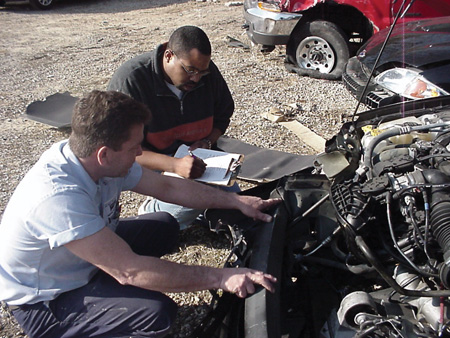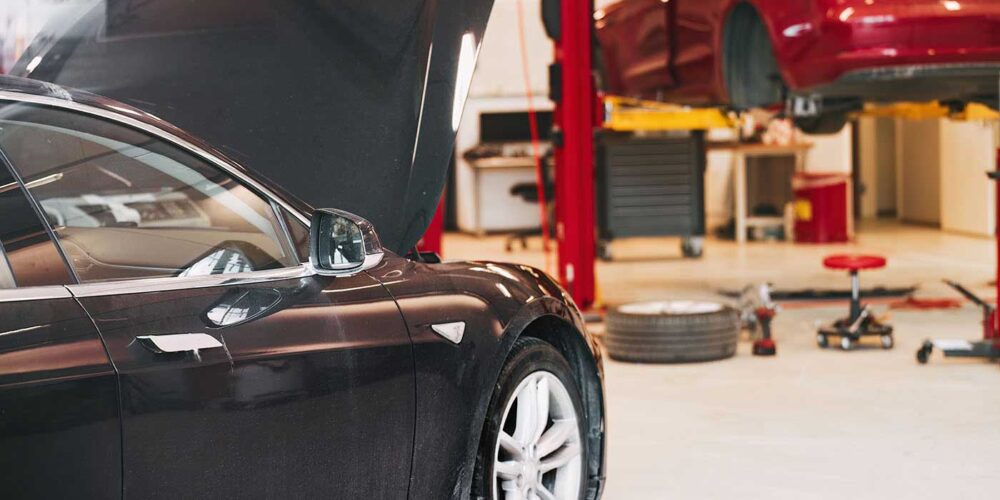
With the ever-changing complexity of today’s vehicles, manufacturers’
repair information is one of the most important tools collision
repairers can use on a daily basis. Whether you’re an estimator,
manager, insurance adjuster, technician or part of the production team,
proper repair procedures from the manufacturer will allow you to
identify, negotiate and explain key repair plan thought processes, as
well as assist and manage critical business indicators such as cycle
times, hours per day, sublet repairs, technician efficiencies, overall
productivity and profits.
Many considerations arise when preparinga repair plan, whether it’s for your insurance partners, everyday customers or technicians. Minimal supplements, factory recommendations, correct documentation, customer satisfaction and cost-effectiveness are a few issues that must be considered.
Questions such as these will confront you or your staff daily:
- Should I section this or replace the entire panel?
- How do I handle this hybrid?
- What SRS parts do I need to replace after the accident?
- Can we reset the tire pressure monitoring system?
- Does my technician know how to remove the trim panel on this vehicle?
- Can we repair this suspension here at our shop?
- How can I provide my customers detailed repair documentation if they require it? Documentation is critical to a repair strategy.
So is preproduction or the production phase the best time to access or source this valuable repair information? Based on your collision operation and processes, the answer to that question is “both.”
Accessing manufacturers’ repair information during the preproduction phase or at the time of the repair plan is an effective way of properly identifying critical repair decisions. Notice I said “repair plan” and not estimate.
Often, a certain repair procedure may be available, but if you don’t know it, work on the vehicle can halt because of supplements, authorizations, parts orders or sublet repairs. Whenever you stop or delay a vehicle during the production process, cycle times increase and efficiencies and overall shop profitability decline. If you gave thought to proper repair techniques, locations and practices during the repair plan or before production, these critical performance indicators would ultimately benefit.
For example, let’s say you’re writing an estimate on a 2007 vehicle that has structural damage to the front. Do you know if the structural component can be repaired, or should it be replaced? If you have to replace it, can it be sectioned and where? Without the correct repair procedure, you may develop your estimate based on prior experience, hearsay, industry-accepted practices or the ever-popular “guess.”
As the vehicle moves into production, parts have been ordered and the estimate has been approved. The technician diligently disassembles the vehicle, but then realizes the damaged structural component cannot be repaired with the method on the estimate because it appears that the component is made of advanced high-strength steel. Production stops, a supplement is generated, approval for additional repairs is pending and parts are reordered.
If you accessed the proper repair and identification procedures from the manufacturer at the time of the repair plan, you could have avoided this scenario. Ask yourself how much time you spend reacting to estimates that were prepared incorrectly, as in our example. Would you ultimately generate less work for yourself if you did some repair research before production or when you were developing your re- pair plan?
During the production phase, a technician ulti- mately benefits by being efficient or keeping his hands on the vehicle. Locations of components, testing procedures, disabling operations, material identification and overall proper repair procedures are only a small portion of what today’s collision technicians face day in and day out. By providing them with access to manufacturers’ information, couldn’t they increase their overall productivity and efficiency? Ask yourself this question the next time your technician can’t locate a component or remove a certain part without instructions.
Vehicle complexity is changing at a rapid pace, and to stay current we need to use the latest repair strategies and procedures available. A proactive approach, a proper repair plan and use of published procedures from the manufacturer are effective ways to manage your time and your team. This strategy will ultimately provide safe and accurate repairs for our valued customers. Isn’t that why we’re in business?
Dan Espersen is the ALLDATA Collision Program Manager. He’s I-CAR Platinum Certified, a Gold Pin Member of the Collision Industry Conference (CIC) and holds an AA Degree in Automotive Technology. He has 15 years of experience in the collision industry and 17 years of experience in the auto-
motive industry.
© 2008 ALLDATA LLC. All rights reserved. All technical information, images and specifications are from the ALLDATA Product. ALLDATA is a registered trademark of ALLDATA LLC. All other marks are the property of their respective holders.













